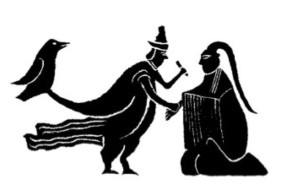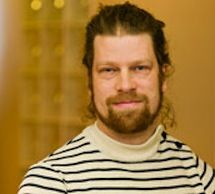The Traditional Chinese Model
 According to Chinese Medicine, the body is composed of the opposing forces of Yin and Yang. When these forces are in balance, the body and spirit are healthy. Our vitality (Qi) flows like streams and rivers throughout the body on a web-like series of pathways called Meridians, keeping our health in a fine-tuned state of balance. Sometimes this energy can become blocked however, and the disruption in the flow can lead to illness.
According to Chinese Medicine, the body is composed of the opposing forces of Yin and Yang. When these forces are in balance, the body and spirit are healthy. Our vitality (Qi) flows like streams and rivers throughout the body on a web-like series of pathways called Meridians, keeping our health in a fine-tuned state of balance. Sometimes this energy can become blocked however, and the disruption in the flow can lead to illness.
The idea behind acupuncture is that stimulating specific points on these meridians with very fine needles or pressure relieves obstructions in the flow of Qi, enabling the body’s own healing mechanisms.
The Western Scientific Perspective
While the concept of Qi and meridians does not correlate directly with western science (because meridians and Qi are conceptual explanations and are not directly related to either the cardiovascular or neurological systems), a relation between acupuncture points and known neural structures has been found. Several Canadian researchers have played instrumental roles in describing and quantifying this fact.
According to one scientific study on pain relief induced by acupuncture it was concluded that acupuncture works by stimulating nerve fibers in the muscles, which send impulses to the spinal cord, midbrain and hypothalamus-pituitary. These centers in turn increase blood flow, and stimulate hormonal changes such as the release of endorphins and monamines which block the pain impulses.
The Balancing Effect
Traditional Chinese Medicine is originating in Taoist thought, developed by Confusian philosophy, and created through its’ own rigorous process. It is based on a paradigm of balance in nature, a concept that has existed for millennia, originating in Taoist thought. Through contrast, and relativity, this system has allowed us to understand ourselves in both a macroscopic and microscopic way.
The reason for stating at the outset that it is fortunate that TCM is not based on science is to acknowledge its value in solving health-related problems that confound modern medicine. Often modern medical knowledge with its emphasis on studying the minute details about a condition misses the big picture one sees when symptoms are viewed through the eyes of an individual with training in TCM concepts. Using that knowledge often leads to a successful outcome for an ill person that was impossible with western medicine.
Ultimately, it is one’s innate healing potential that cures disease. Acupuncture is simply a means to assist the body in activating one’s own innate healing potential. We talk about being centered or staying focused from the center of our being. In Oriental thought, not being centered is the same as being out of balance, and being centered is the same as being in a state of balance or wellness. This is the natural function of the body and goal of acupuncture treatment. Health is not simply a composite of quantifiable entities such as chemical levels in the blood and urine. It is ultimately a state of perfect balance – physical, mental, emotional and spiritual.
Status of the Profession
The World Health Organization, which publishes information on the regulation of traditional medicine, recognizes acupuncture as effective treatment for 43 ailments. Please see Acupuncture: Review and Analysis of Reports on Controlled Clinical Trials (WHO, 2003; 87 pages)
On June 17, 1994, the National Assembly of Quebec passed a law leading to the establishment of l’Ordre Professionnel des Acupuncteurs du Québec.
In the United States, a concensus statement released by the National Institutes in 1997 found that acupuncture could be useful by itself or with other therapies to treat, among other problems, headaches, fibromylagia, lower back pain, menstrual pain, and asthma.
Benefits
As a natural form of healing, acupuncture has the following benefits:
- provides drug-free pain relief
- effectively treats a wide range of acute and chronic ailments
- treats the underlying cause of disease and illness as well as the symptoms
- provides an holistic approach to the treatment of disease and illness, linking body, mind, and spirit
- assists in the prevention against disease and illness as well as the maintenance of general well-being
Increasingly Popular
According to the 2007 National Health Interview Survey, which included a comprehensive survey of ‘complimentary medicine’ use by Americans, an estimated 3.1 million U.S. adults and 150,000 children had used acupuncture in the previous year. Between the 2002 and 2007 NHIS, acupuncture use among adults increased by approximately 1 million people.
